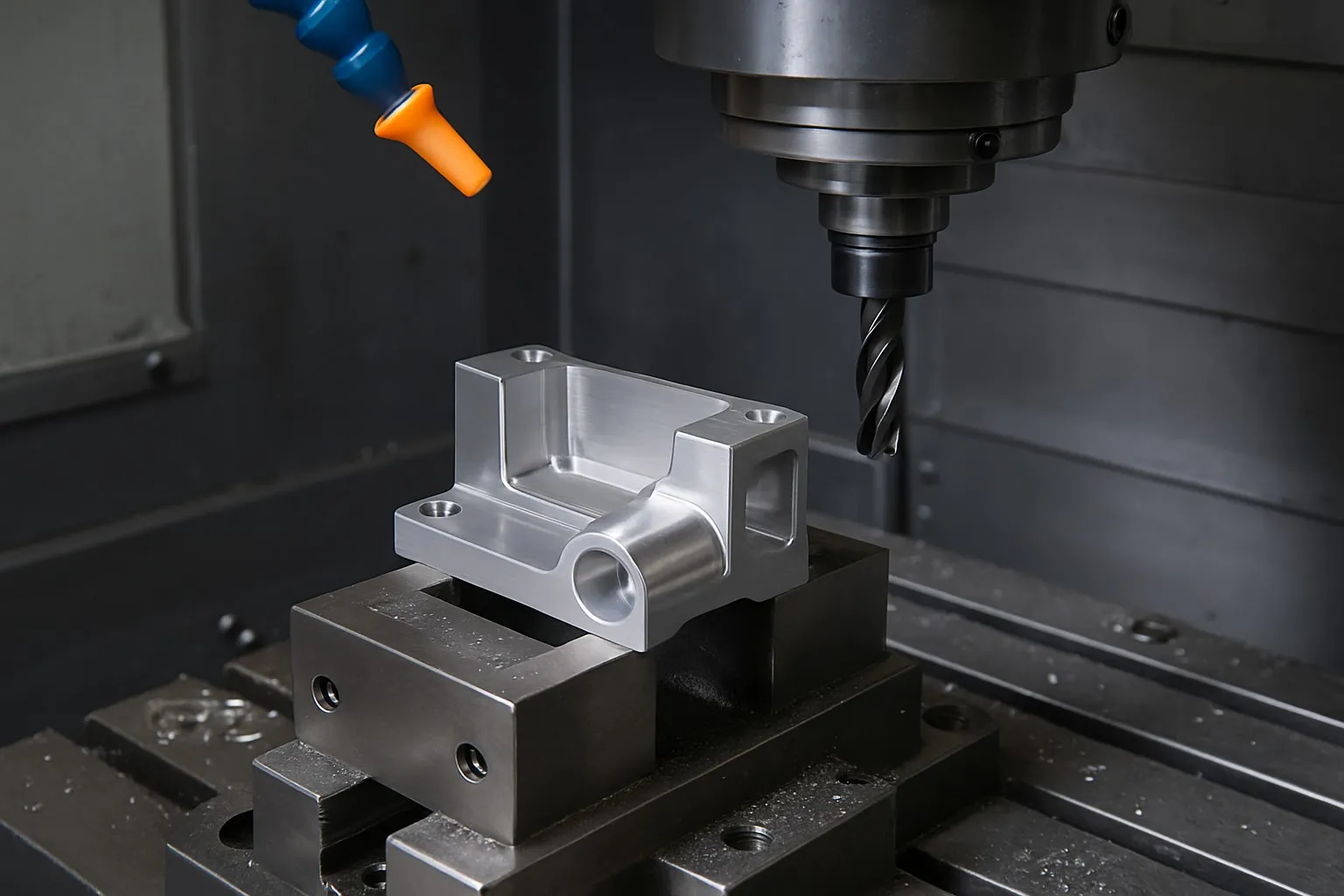CNC machining is awesome. It’s fast, precise, and pretty much the go-to way to turn your designs into real-world parts — especially for prototypes and small batches. But if you've ever been surprised by a high quote, you're not alone. CNC isn’t cheap, and a lot of people unknowingly drive up their costs just through design or material choices.
The good news? You can usually bring costs down — sometimes a lot — without sacrificing quality. Here’s how I think about it when trying to keep CNC jobs affordable and efficient.
1. Simplify the Geometry
Complicated parts = expensive parts.
It’s tempting to add cool features, cutouts, undercuts, or intricate details — especially when CAD makes it so easy. But every deep pocket or tiny radius adds machining time. Sharp internal corners need smaller tools. Deep cuts require long-reach tooling and slower feeds. If a feature doesn’t serve a critical purpose, it might be costing you more than it’s worth. Try to keep shapes clean, wall thicknesses reasonable, and avoid anything that requires the machinist to get fancy unless absolutely necessary.
2. Choose the Right Material
Material choice makes a bigger difference than most people realize.
Titanium and stainless steel sound cool, but they’re rough on tools, slow to cut, and pricey to begin with. If your part doesn’t need high strength, heat resistance, or medical-grade specs, switching to aluminum or even plastic can save a ton. For example, Delrin machines beautifully and is plenty strong for a lot of non-load-bearing parts. Even within metals, going from 304 stainless to 6061 aluminum can cut your costs in half — or more.
3. Minimize Setup Operations
Each time the part has to be repositioned, your quote goes up.
Think of setups like mini projects within your job. A part that can be made in a single setup is way faster and less error-prone than one that needs to be flipped, rotated, or re-fixtured multiple times. And the more axes you need — say, jumping from a 3-axis to a 5-axis machine — the more expensive the job becomes. Sometimes you’re better off splitting a complex part into two simpler parts and assembling them afterward. Weirdly, breaking things apart can make them cheaper.
4. Limit Post-Processing
Finishes are nice, but they add time and cost.
Anodizing, bead blasting, polishing — they look great, but unless you actually need the surface protection or appearance, they might be overkill. Raw-machined aluminum, for example, already looks pretty good and performs just fine in a lot of applications. If you do need a finish, you can often apply it only to the visible or functional surfaces rather than the entire part. Just be clear about that when you send the job out.
5. Order in Batches
One part is always the most expensive part.
Most of the cost in a CNC job isn’t in the cutting — it’s in the setup: loading tools, writing the program, zeroing the machine. If you’re only making one piece, you’re eating all that overhead yourself. But if you make five or ten, that cost gets spread out, and the per-part price drops fast. Even if you only need a couple now, ordering extras — or versions of the same part — can be a smart move.
6. Provide Clear Drawings and Tolerances
A good drawing is worth its weight in gold.
Machinists aren’t mind-readers. If your part has threads, critical fits, or specific finishes, those need to be called out — ideally in a clean 2D drawing that goes along with the 3D file. Tolerances are important too. If you leave everything at ±0.001", don’t be surprised if your quote is high. Use tight tolerances where they matter and let the rest stay loose. You’ll get the same function for less money — and fewer headaches.
7. Avoid Non-Standard Features
Stick to the toolbox.
Using weird hole sizes, custom threads, or exotic radii might seem like a small thing, but they often require custom tooling or special taps. That means more cost and potential delays. If you can, use standard metric or imperial threads, common drill sizes, and default fillets. Machinists love that stuff because it’s fast and predictable. And predictable means cheaper.
8. Pick the Right Shop for the Job
Not all machine shops are created equal.
Some shops do tight-tolerance aerospace parts all day — they’re amazing, but they’re not cheap. Others focus on rapid prototyping or small batches. If you send a basic aluminum bracket to a high-end aerospace shop, they’ll treat it like a mission-critical part (and charge you accordingly). Platforms like Ziqual can help you find shops that are actually a good fit for the kind of work you’re doing. That alone can save you time, money, and frustration.
Final Thoughts
Cutting costs on CNC parts isn’t about cutting corners. It’s about making smart choices early on — during design, material selection, and communication with your shop. Most of the expensive mistakes I’ve seen weren’t because someone chose a bad machine shop. They were because the part was overcomplicated, under-specified, or just not optimized for the way CNC machining works.
So if you’re regularly sending out parts for machining, spend a little time thinking like the person who has to make them. Your parts will be cheaper, your quotes will come back faster, and your machinists will probably thank you for it.
